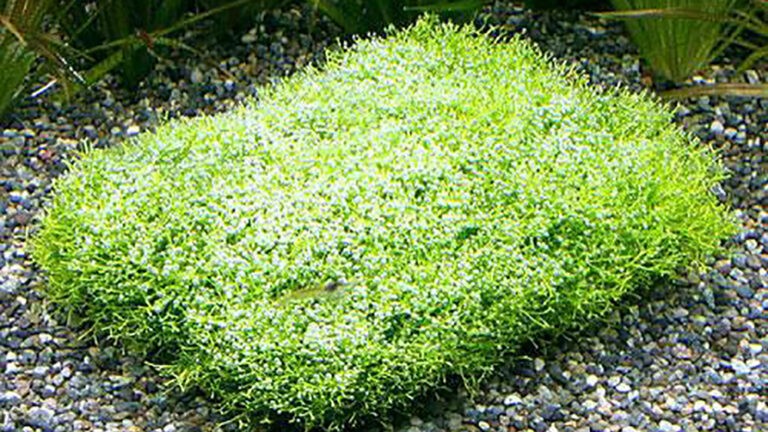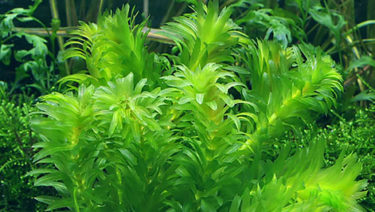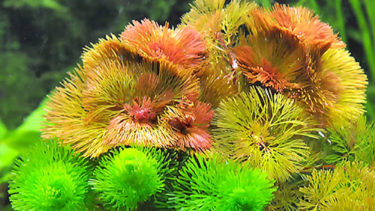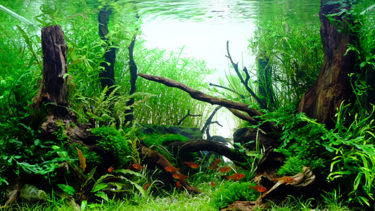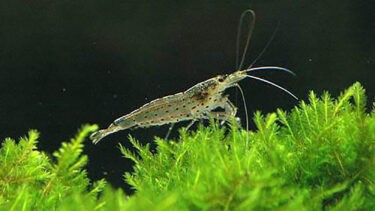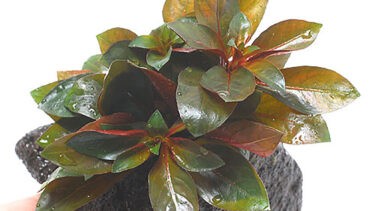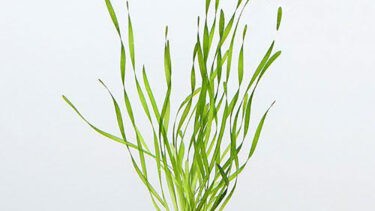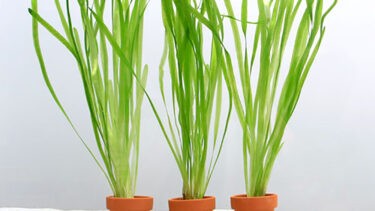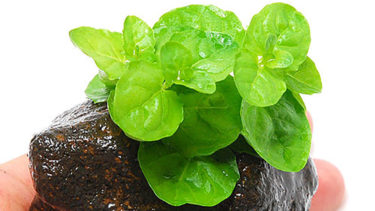Licia is one of the floating plants belonging to the family of the Zeniophyceae, the family of the Bryophyceae. It is originally grown to float like a floating plant, but in aquariums, it is often grown underwater. It is also known as "deer horn moss" because it grows in a Y-shape like a deer's horn. In this article, we will explain the characteristics of Licia and how to grow them.
What is Licia?

Licia is a floating plant that belongs to the family of the mosses, family Coccolithaceae. It is usually kept floating like a floating plant, but in aquariums, it is often grown underwater. Licia can be rooted and submerged by attaching them to a stone or driftwood called a lithia stone with sewing thread. The main reason for keeping them underwater is that they can create beautiful air bubbles.The bubbles generated by lights and other light sources reflect and sparkle. Licia has another name, "deer antler moss," because it grows in a Y shape like a deer's antlers, and some specialty stores use these names.
Anacaris is one of the submerged plants of the family Cercidiphyllaceae of the phylum Cercidiphyllaceae. In stores, it is sometimes sold under its Japanese name, "giant duckweed. In this article, we will explain the characteristics of anacaris and how to grow it. What is Anacaris Anacaris [...].
Cabomba is one of the submerged plants of the Hagoromoidea family of the phylum Coccolithophyta. In some stores and other places, it is sold under the name "Camomba" in addition to Cabomba. In this article, we will explain the characteristics of cabomba and how to grow it. What is Cabomba and what is Cabomba [...]?
Pine needles are one of the submerged plants of the family Pineaceae of the phylum Angiospermae. Pine needles are characterized by their stiff, thread-like thinness like pine needles. In this article, we will explain the characteristics of Matsumo and how to grow it. What is Pine Saplane? Pine Saplane is one of the submerged plants of the family Pineaceae of the phylum Angiospermae [...].
How to Grow Licia
Licia are often kept by fixing them to stones or driftwood, as mentioned above. However, it takes about one to three weeks for them to become established. During this time, they may float or the strings that have been tied may become loose, so care is required. Licia go into floating plants that are easy to keep. They prefer a water temperature of around 20-26℃. As for water quality, mildly acidic to neutral is suitable.Regarding light intensity, it is better to have them be careful when keeping them in a place where they are exposed to sunlight for a couple of hours, as this is more important for promoting growth and stabilizing coloration. Carbon dioxide (CO2) may also be added to the lyssia to promote growth. Carbon dioxide (CO2) should be placed in a separate tank for living organisms, etc., as there is a risk of acid deprivation by adding it.
Water plants are indispensable for people who keep aquariums and ornamental fish. However, there are many aquatic plants available at specialty stores, and many people do not know what to buy. In this article, we will introduce you to some of the most popular aquatic plants that are easy to grow and have special [...]
However, the location of the pet and changes in water temperature are easier to control than outdoors, which means that the person who manages the pet must be competent. In this article, we will explain how to keep them indoors and what to keep in mind. How to keep them indoors [...].
Outdoors, compared to indoors, there are many more external enemies than indoors, and changes in weather and other creatures can cause goldfish to die unexpectedly. However, it is possible to know the causes and prevent as much as possible. In this article, we will explain how to keep your goldfish outdoors and what to keep in mind. How to keep them outdoors [...].
Caring for Licia

Licia can become voluminous as they grow, so be sure to cut them to match their height. Do not throw away the cut parts as they can grow and multiply if they are placed in another tank. Licia are well known for their tendency to be covered with moss. Therefore, please remove moss when it is attached.Note that if moss is left attached, it may not absorb light well and slow down the growth rate. If it is troublesome to remove moss, keeping "southern shrimp" or "Yamato shrimp" together will be helpful, as they will eat the moss.
The southern shrimp is native to East Asia, including Japan, the Korean Peninsula, China, and Taiwan. It is a member of the family Ctenophoridae (decapod shrimps) and has thin black lines at regular intervals on its back. In this article, we will discuss in detail the characteristics of this shrimp and how to keep it [...].
The Yamato numaebi is a shrimp that is native to East Asia, including Japan, Korea, and Taiwan, and belongs to the family Numaebiidae of the order Shrimps (decapods), and has a transparent body with a thin red dotted line. In this article, I would like to explain in detail the characteristics and how to keep such a Yamato numaebi [...].
How to increase lithia
As a way to increase the number of lysias, you can put cut parts of lysias in a separate aquarium when caring for them, so they can grow and increase. However, if you leave them in the tank as they are, they will grow separately and it may be troublesome to collect them when you try to fix them to driftwood, etc. We recommend that you put a net in the tank so that they will naturally gather in the net and you do not need to spend time and effort on them.
Creatures and Lycia
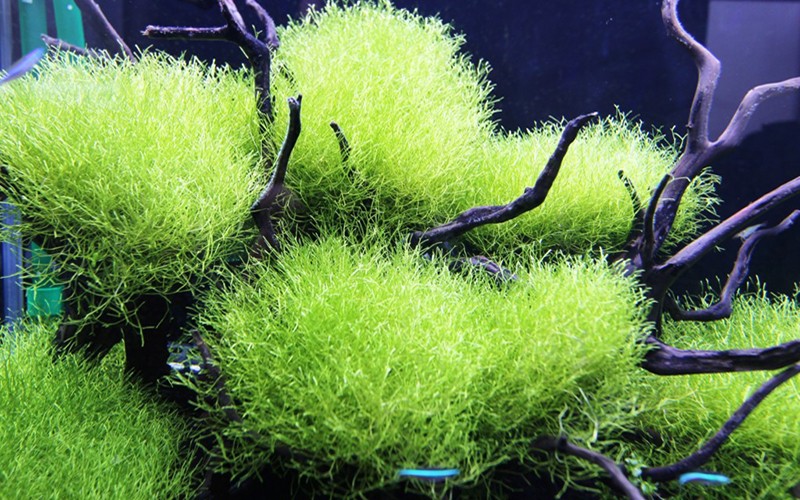
Licia will be the recommended water plant for those who keep living creatures. It is especially suited for those who keep small fish (such as killifish). Be careful with large species, as they may eat the lyssia as food and lose it before it can be fixed.Licia can also be used as a hiding place for killifish and other small fish. Licia can be placed in the foreground and in the background of the aquarium. It can also be placed between aquatic plants to fill in gaps and make them look more beautiful. If you have several types of aquatic plants and are looking for a different type of aquatic plant, this is a good choice.
Sometimes you may feel lonely when you have only goldfish in your aquarium. The easy solution to such a situation is to use aquatic plants. Adding various kinds of water plants to the aquarium can make it more colorful. In this article, we will explain why you should add water plants to your goldfish. [...].

